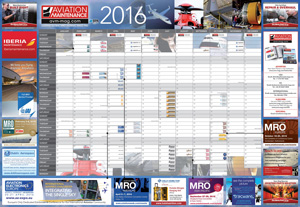By Jason Dickstein
Over the years, I have heard a lot of debate about the use of PMA parts on leased aircraft. Challenges may arise from restrictive clauses in lease agreements that prevent the use of PMA on the asset. This can cause particular headaches when the lessor is an air carrier that is looking to reduce maintenance costs, but whose largely (or exclusively) leased fleet means that restrictive clauses (either perceived or actual) restrict use of PMA.
The good news for the aviation industry is that lessors’ position with respect to use of PMA appears to be loosening as:
– lessees demand the right to use PMA,
– lessors become more familiar with PMA, and
– the industry continues its shift toward ever greater PMA acceptance.
The first, and most important, step in greater PMA acceptance on leased aircraft is demand by the operators. If PMA is not useful to the operators then it is not useful at all. We have already heard at least two air carriers–Delta Air Lines and Copa Airlines–state unequivocally that they will not sign leases with “no PMA” clauses in them. Many – MANY – others have asked how they can start using PMAs on their leased aircraft. At several industry trade shows over the past year, we have heard multiple parties–both air carriers and lessors–state that the use of PMA on leased aircraft was a common occurrence; the lessee (the air carrier) just has to ASK.
Lessors typically enter a lease negotiation with a set of boilerplate terms. Those terms, however, are subject to change to suit the lessee’s business model and to satisfy the needs of both parties. At MRO Asia last year, Ananta Widjaja from Sriwijaya Air pointed out that a lessor will never give a lessee anything outside of the boilerplate unless the carrier asks for it. This point was echoed by a number of lessors over the course of that conference, who recognize that use of PMA is a reality in virtually every air carrier’s operation.
This is an important point for air carrier maintenance departments to discuss with their leasing departments. Remind the leasing department that most lessors will permit PMA to be used on leased aircraft (with a few exceptions); the carrier just has to demand the right. As lessors continue to grow more familiar with PMA, and recognize that use of PMA does not in any way devalue their asset, they grow more willing to waive the “no PMA” clauses in their lease agreements. This is beneficial for the lessee and lessor, as the lessee can continue to realize the savings and reliability improvements provided by PMA, and the lessor opens up more potential customers by allowing the use of PMA.
A number of the air carrier representatives I have met at recent trade shows have pointed out to me that they are quite likely to use PMA during the middle of the lease. For lessors, the most important part of any lease is the return conditions, because these are the terms that dictate the condition of the aircraft for the next lessee. When permitted by the lease, lessees can take advantage of this fact by using PMA throughout the term of the lease (as allowed by the lease terms) and as necessary return, remove PMA parts during the heavy check prior to the return of the aircraft.
I would have expected leasing companies affiliated with OEMs to be the last folks to embrace PMA, but I recently encountered an executive from one such leasing company who admitted that there are PMAs on his company’s products, and acknowledged that it is something they are managing.
Lessors are becoming more accepting of PMA for a couple reasons.
[fullwidth background_color=”” background_image=”” background_parallax=”none” enable_mobile=”no” parallax_speed=”0.3″ background_repeat=”no-repeat” background_position=”left top” video_url=”” video_aspect_ratio=”16:9″ video_webm=”” video_mp4=”” video_ogv=”” video_preview_image=”” overlay_color=”” overlay_opacity=”0.5″ video_mute=”yes” video_loop=”yes” fade=”no” border_size=”0px” border_color=”” border_style=”” padding_top=”20px” padding_bottom=”20px” padding_left=”0px” padding_right=”0px” hundred_percent=”no” equal_height_columns=”no” hide_on_mobile=”no” menu_anchor=”” class=”” id=””][title size=”1″ content_align=”left” style_type=”double” sep_color=”” margin_top=”” margin_bottom=”” class=”” id=””]CURRENT ISSUE[/title][one_third last=”no” spacing=”yes” center_content=”no” hide_on_mobile=”no” background_color=”” background_image=”” background_repeat=”no-repeat” background_position=”left top” hover_type=”none” link=”” border_position=”all” border_size=”0px” border_color=”” border_style=”” padding=”” margin_top=”” margin_bottom=”” animation_type=”” animation_direction=”” animation_speed=”0.1″ animation_offset=”” class=”” id=””][imageframe lightbox=”no” gallery_id=”” lightbox_image=”” style_type=”bottomshadow” hover_type=”none” bordercolor=”” bordersize=”0px” borderradius=”0″ stylecolor=”” align=”center” link=”https://www.avm-mag.com/wp-content/mag/flipbooks/AVM-2016-06-DIGITAL/index.php#Aviation_Maintenance_Magazine/page2-page3″ linktarget=”_blank” animation_type=”0″ animation_direction=”down” animation_speed=”0.1″ animation_offset=”” hide_on_mobile=”no” class=”” id=””]  [/imageframe][separator style_type=”none” top_margin=”” bottom_margin=”20″ sep_color=”” border_size=”” icon=”” icon_circle=”” icon_circle_color=”” width=”” alignment=”” class=”” id=””][/one_third][one_third last=”no” spacing=”yes” center_content=”no” hide_on_mobile=”no” background_color=”” background_image=”” background_repeat=”no-repeat” background_position=”left top” hover_type=”none” link=”” border_position=”all” border_size=”0px” border_color=”” border_style=”” padding=”” margin_top=”” margin_bottom=”” animation_type=”” animation_direction=”” animation_speed=”0.1″ animation_offset=”” class=”” id=””][title size=”2″ content_align=”left” style_type=”underline” sep_color=”” margin_top=”” margin_bottom=”” class=”” id=””]IssueHighlights:[/title][checklist icon=”” iconcolor=”#81d742″ circle=”no” circlecolor=”” size=”18px” class=”” id=””][li_item icon=””]Editor’s Notebook[/li_item][li_item icon=””]Intelligence: News[/li_item][li_item icon=””]Intelligence: About People[/li_item][li_item icon=””]Intelligence: Aviation Electronics News[/li_item][li_item icon=””]Setting the Standard[/li_item][li_item icon=””]Borescopes from Basic to Bodacious[/li_item][li_item icon=””]Parts, Parts, … Who has the Parts?[/li_item][li_item icon=””]Smart Assets[/li_item][/checklist][/one_third][one_third last=”yes” spacing=”yes” center_content=”no” hide_on_mobile=”no” background_color=”” background_image=”” background_repeat=”no-repeat” background_position=”left top” hover_type=”none” link=”” border_position=”all” border_size=”0px” border_color=”” border_style=”” padding=”” margin_top=”” margin_bottom=”” animation_type=”” animation_direction=”” animation_speed=”0.1″ animation_offset=”” class=”” id=””][imageframe lightbox=”no” gallery_id=”” lightbox_image=”” style_type=”bottomshadow” hover_type=”none” bordercolor=”” bordersize=”0px” borderradius=”0″ stylecolor=”” align=”center” link=”http://www.avm-mag.com/wp-content/uploads/2016/01/AVM_Calendar_2016_FINAL_v10_LORES.pdf” linktarget=”_blank” animation_type=”0″ animation_direction=”down” animation_speed=”0.1″ animation_offset=”” hide_on_mobile=”no” class=”” id=””]
[/imageframe][separator style_type=”none” top_margin=”” bottom_margin=”20″ sep_color=”” border_size=”” icon=”” icon_circle=”” icon_circle_color=”” width=”” alignment=”” class=”” id=””][/one_third][one_third last=”no” spacing=”yes” center_content=”no” hide_on_mobile=”no” background_color=”” background_image=”” background_repeat=”no-repeat” background_position=”left top” hover_type=”none” link=”” border_position=”all” border_size=”0px” border_color=”” border_style=”” padding=”” margin_top=”” margin_bottom=”” animation_type=”” animation_direction=”” animation_speed=”0.1″ animation_offset=”” class=”” id=””][title size=”2″ content_align=”left” style_type=”underline” sep_color=”” margin_top=”” margin_bottom=”” class=”” id=””]IssueHighlights:[/title][checklist icon=”” iconcolor=”#81d742″ circle=”no” circlecolor=”” size=”18px” class=”” id=””][li_item icon=””]Editor’s Notebook[/li_item][li_item icon=””]Intelligence: News[/li_item][li_item icon=””]Intelligence: About People[/li_item][li_item icon=””]Intelligence: Aviation Electronics News[/li_item][li_item icon=””]Setting the Standard[/li_item][li_item icon=””]Borescopes from Basic to Bodacious[/li_item][li_item icon=””]Parts, Parts, … Who has the Parts?[/li_item][li_item icon=””]Smart Assets[/li_item][/checklist][/one_third][one_third last=”yes” spacing=”yes” center_content=”no” hide_on_mobile=”no” background_color=”” background_image=”” background_repeat=”no-repeat” background_position=”left top” hover_type=”none” link=”” border_position=”all” border_size=”0px” border_color=”” border_style=”” padding=”” margin_top=”” margin_bottom=”” animation_type=”” animation_direction=”” animation_speed=”0.1″ animation_offset=”” class=”” id=””][imageframe lightbox=”no” gallery_id=”” lightbox_image=”” style_type=”bottomshadow” hover_type=”none” bordercolor=”” bordersize=”0px” borderradius=”0″ stylecolor=”” align=”center” link=”http://www.avm-mag.com/wp-content/uploads/2016/01/AVM_Calendar_2016_FINAL_v10_LORES.pdf” linktarget=”_blank” animation_type=”0″ animation_direction=”down” animation_speed=”0.1″ animation_offset=”” hide_on_mobile=”no” class=”” id=””]  [/imageframe][separator style_type=”none” top_margin=”” bottom_margin=”20″ sep_color=”” border_size=”” icon=”” icon_circle=”” icon_circle_color=”” width=”” alignment=”” class=”” id=””][fusion_text]NEW – the large fold out 2016 Wall planner was inserted into the Dec/Jan issue but you can also click/view above.[/fusion_text][/one_third][/fullwidth]
[/imageframe][separator style_type=”none” top_margin=”” bottom_margin=”20″ sep_color=”” border_size=”” icon=”” icon_circle=”” icon_circle_color=”” width=”” alignment=”” class=”” id=””][fusion_text]NEW – the large fold out 2016 Wall planner was inserted into the Dec/Jan issue but you can also click/view above.[/fusion_text][/one_third][/fullwidth]